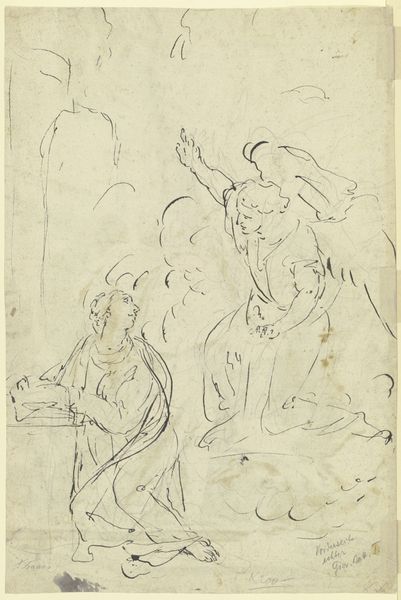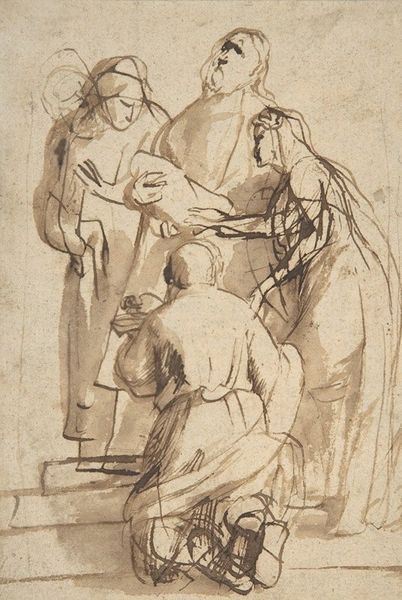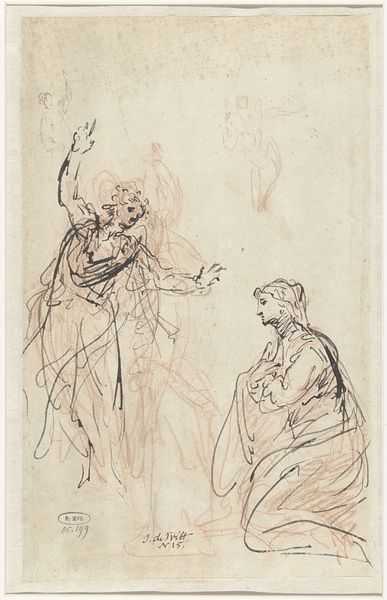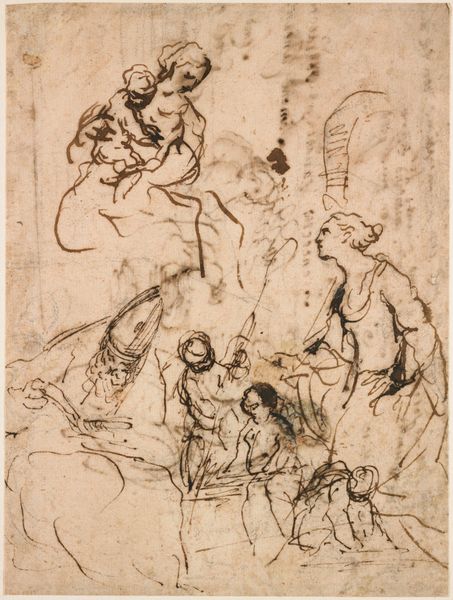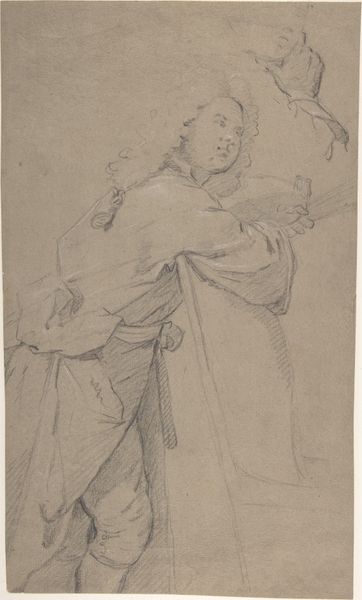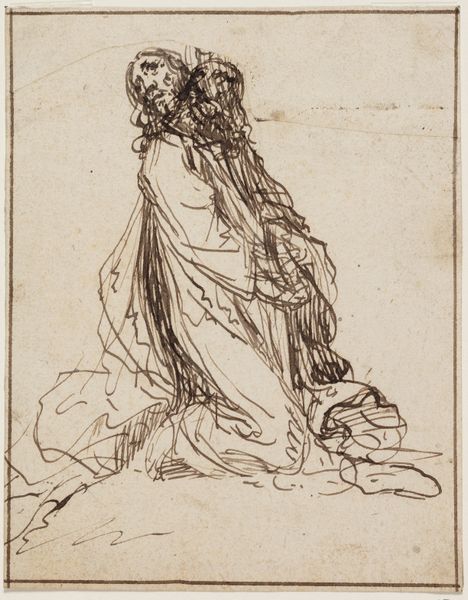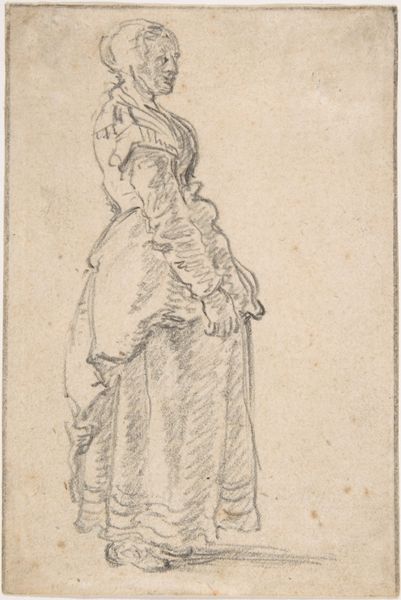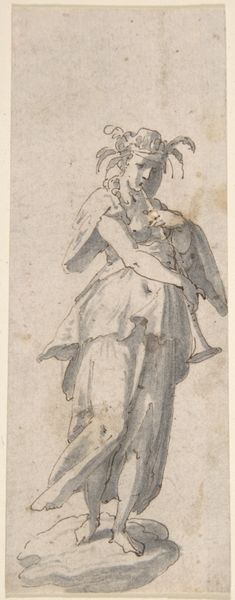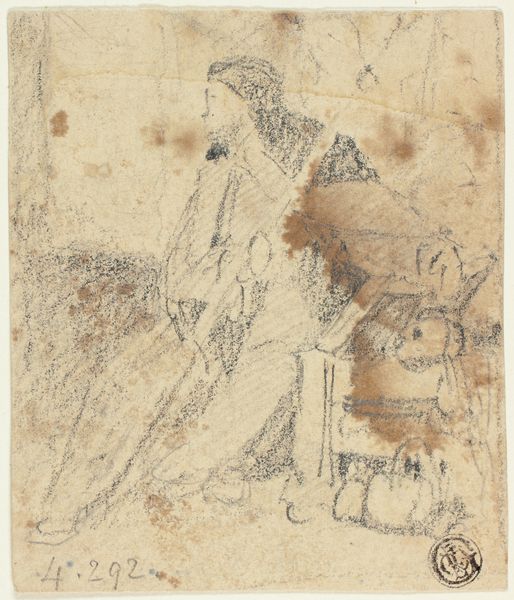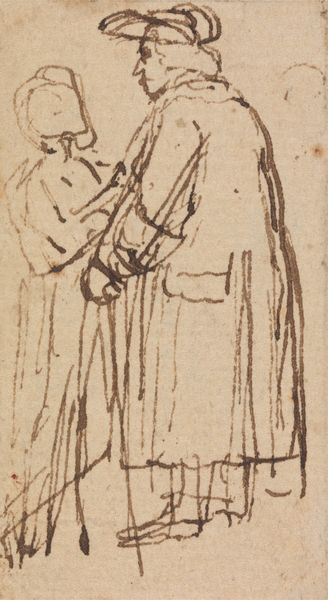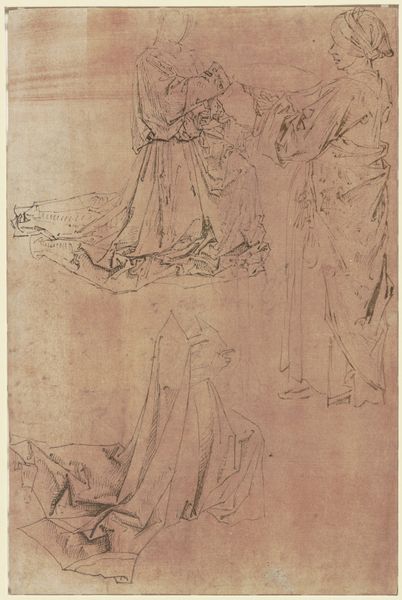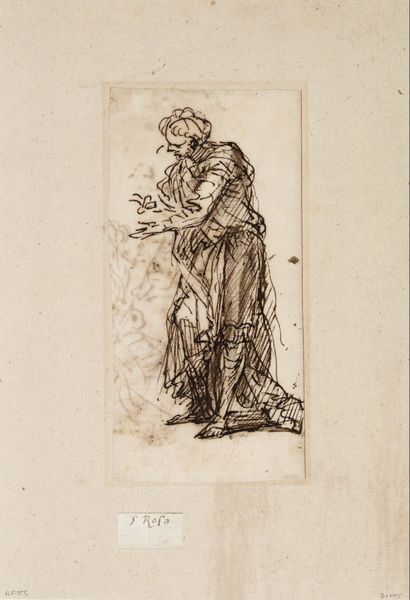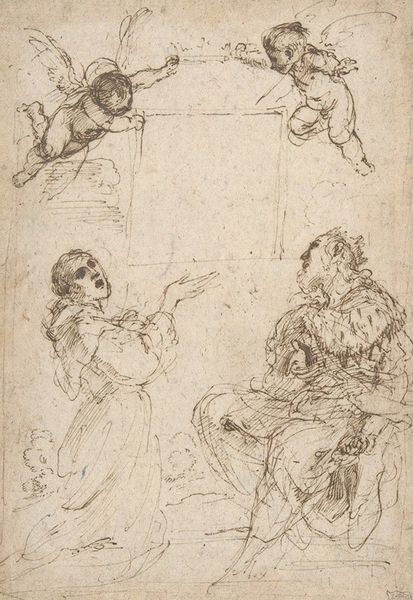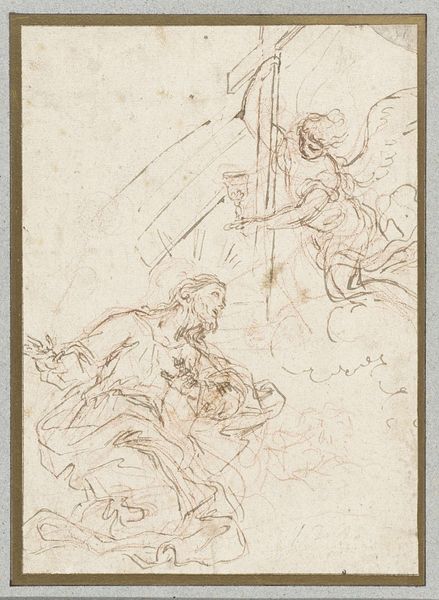
drawing, paper, ink
#
portrait
#
drawing
#
baroque
#
figuration
#
paper
#
ink
Dimensions: height 105 mm, width 81 mm
Copyright: Rijks Museum: Open Domain
Curator: My gut reaction? It’s raw, exposed somehow. There's a vulnerability practically vibrating off that paper. It's a world in sepia. Editor: We're looking at "Woman Kneeling Before a Man," a drawing made around 1640 by Ferdinand Bol. The medium is ink on paper and it resides here at the Rijksmuseum. What do you think generates this strong response? Curator: It's in the immediacy of it, I think. Look at the looseness of the lines, how swiftly it must have been captured! You sense the ephemeral nature of a thought made visible. What I read is urgency, with strokes so quick and loose. Editor: And you see this urgency translating to vulnerability. I can see that. Given Bol's proximity to Rembrandt, his probable tutelage even, we see those Baroque theatrical themes emerging here. The social hierarchy on display in this dramatic gesture, the use of shadow to accentuate both figures… Curator: Exactly! The shadow grounds the woman, even emphasizes her subservience. It anchors her in a way the man simply isn't. His presence is... suggestion rather than declaration. He almost floats on the page. Is it mercy he's offering or simple dismissal? I cannot tell! Editor: It leaves it nicely unresolved. A power dynamic hanging suspended. Consider the artistic culture in which Bol was operating: The Dutch Golden Age, an era defined by its market economy of art and increasing specialization in genres like portraiture or history painting. Here we see, potentially, both at play in one sheet. Curator: It’s so captivating to see this dance between the concrete and the suggestive. The power that an artist finds not in what is completely rendered, but rather in that what’s only gestured toward... a suggestion to explore. Editor: Yes, the unfinished quality grants it an enduring power, doesn’t it? It begs questions, generates intrigue... and maybe reveals the tensions of that specific time. Curator: Precisely, and perhaps that's what speaks most powerfully still, centuries later: the quiet hum of human struggle captured in ink. Editor: Indeed. Art offers a view of both past and present. Thank you!
Comments
No comments
Be the first to comment and join the conversation on the ultimate creative platform.
